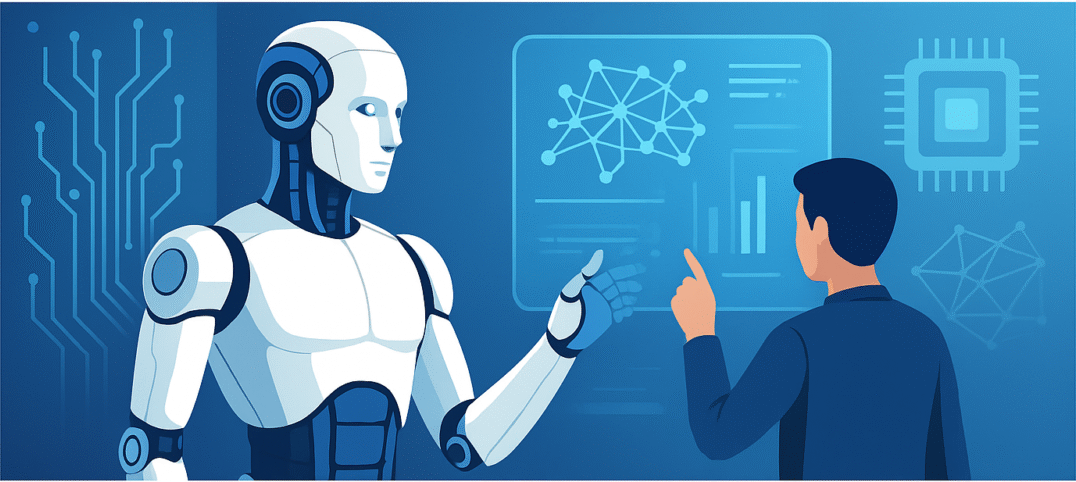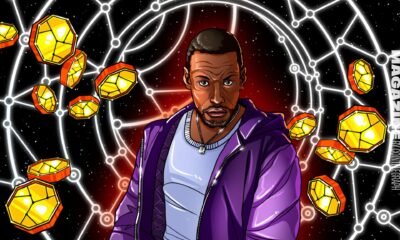Tech
The Key Technology Trends Shaping 2025: AI, Computing, and Human Synergy

Description:
Discover the top technology trends shaping 2025 from Agentic AI and post-quantum computing to spatial computing, robotics, and sustainable innovation. Learn how businesses are preparing for the next digital revolution.
Introduction: The Next Wave of Intelligent Innovation
Technology in 2025 is about integration and autonomy. From AI-driven digital coworkers to quantum-secure computing and sustainable power, the pace of innovation is accelerating and it’s all about how humans and machines collaborate.
According to Gartner, McKinsey, and Capgemini, the coming year will be defined by breakthroughs in AI autonomy, energy-efficient computing, and human-machine synergy trends that promise to reshape industries, work, and society.
1. AI Revolution and Autonomous Systems
Agentic AI: The Rise of Digital Coworkers
Agentic AI represents the next generation of artificial intelligence systems capable of planning, learning, and executing complex workflows with minimal human input. Gartner predicts that these intelligent agents will soon act as autonomous digital coworkers, transforming productivity and decision-making across industries like finance, logistics, and healthcare.
Internal link suggestion:
[Read more: “How Agentic AI Is Redefining Workflows in 2025”]
AI Governance Platforms: Building Trust in Automation
As AI grows more autonomous, organizations are investing in AI governance platforms to ensure transparency, fairness, and compliance. These tools manage ethical and operational risks, ensuring responsible AI adoption and long-term trust.
Generative AI in Cyber security
Generative AI isn’t just creative it’s defensive. In 2025, AI-driven cyber security systems will analyze threats, automate responses, and adapt to emerging risks faster than human teams. Cap Gemini notes that autonomous AI agents are becoming essential in protecting digital infrastructure and supply chains.
Neurological Enhancement and Cognitive Augmentation
Emerging neuro technologies aim to decode brain activity and enhance learning, creativity, and mental focus. These systems could soon merge biological and artificial intelligence, creating smarter and more personalized human-machine collaboration tools.
2. Advanced Computing and Sustainability
Post-Quantum Cryptography: Securing the Future
Quantum computing’s immense power poses a risk to traditional encryption. Post-quantum cryptography (PQC) is emerging as a defense mechanism, ensuring long-term data protection against quantum-level attacks. Gartner predicts PQC will become a core security standard by 2025.
Internal link suggestion:
[Learn more: “Quantum Computing Explained and Why It Matters Now”]
Hybrid and Energy-Efficient Computing
Sustainability is becoming an innovation driver. Organizations are adopting hybrid computing models that combine cloud, edge, and neuromorphic systems to optimize energy consumption. These models enable green data centers, powered by renewable sources and AI-based energy management.
Application Specific Semiconductors
McKinsey reports that custom semiconductors are fueling AI and edge innovation. Designed for specialized workloads, they offer higher speed and lower power use essential for the next wave of AI-enabled devices and autonomous systems.
Quantum and Adaptive Computing
Beyond theory, quantum computing is now driving real breakthroughs in cryptography, materials research, and drug discovery. Meanwhile, adaptive computing dynamically adjusts processing based on task demand, cutting energy waste and improving performance.
3. Human Machine Synergy
Spatial Computing: Bridging Physical and Digital Worlds
Spatial computing merges augmented reality (AR), virtual reality (VR), and real-world data to create immersive digital spaces. Industries such as healthcare, gaming, and industrial design are leveraging it for training simulations, digital twins, and interactive design environments.
Polyfunctional and AI-Driven Robotics
2025 marks a turning point in robotics. AI-driven robots can now perform multiple tasks collaboratively with humans whether it’s assembling components, assisting in surgery, or managing warehouses. These polyfunctional robots represent a fusion of mechanical precision and cognitive intelligence.
Internal link suggestion:
[Explore: “The Future of Robotics From Automation to Collaboration”]
Ambient Invisible Intelligence
Imagine systems that understand your needs before you do. Ambient intelligence blends sensors, AI, and IoT to create environments that automatically adjust lighting, temperature, and digital workflows. It’s the foundation of next-generation smart homes and workplaces.
4. Emerging Industry Impacts
Supply Chain Transformation
AI, blockchain, and IoT are building resilient and transparent supply chains. Predictive analytics and satellite data help organizations anticipate disruptions and maintain operational continuity even under global stress.
Energy and Nuclear Innovation
The world’s demand for clean, reliable energy is driving interest in small modular reactors (SMRs) and AI-assisted power systems. These advancements promise sustainable, high-output energy to fuel data-driven economies.
Bioengineering and Personalized Medicine
AI-powered diagnostics are ushering in personalized medicine. By analyzing genetic and lifestyle data, machine learning models can predict diseases earlier and suggest customized treatment plans improving outcomes and reducing healthcare costs.
5. The Future Outlook
The technology landscape of 2025 revolves around intelligence, sustainability, and collaboration. AI drives robotics. Robotics depends on computing. Computing enables sustainability. Together, they form a self-reinforcing ecosystem of innovation.
According to Gartner and McKinsey, leaders who adopt these technologies responsibly will gain lasting competitive advantages not just in efficiency, but in trust, adaptability, and impact.
Conclusion: The Human Core of Future Technology
Technology’s next leap is not just about smarter machines; it’s about a smarter humanity.
The convergence of AI, quantum computing, robotics, and sustainable design will empower organizations to build a future that is intelligent, ethical, and deeply human.
Businesses that focus on human–machine synergy and eco-conscious computing will define the next era of digital transformation one that is powerful, adaptive, and sustainable.

-

 Crypto3 months ago
Crypto3 months agoBitcoin Price Could See “Brief Rally Halt”: Here is Why
-

 Crypto3 months ago
Crypto3 months agoUK Sends 2 to Prison for Combined 12 Years for Crypto Scam
-

 Crypto3 months ago
Crypto3 months agoRussia’s Energy Ministry Launches Crypto Mining Register
-

 Crypto3 months ago
Crypto3 months agoArthur Hayes doesn’t care when his Bitcoin predictions are totally wrong
-

 Crypto2 months ago
Crypto2 months agoCZ Questions TON’s UAE Golden Visa Program
-

 Health1 month ago
Health1 month agoNature’s Pharmacy: How Plants Help in the Fight Against Breast Cancer
